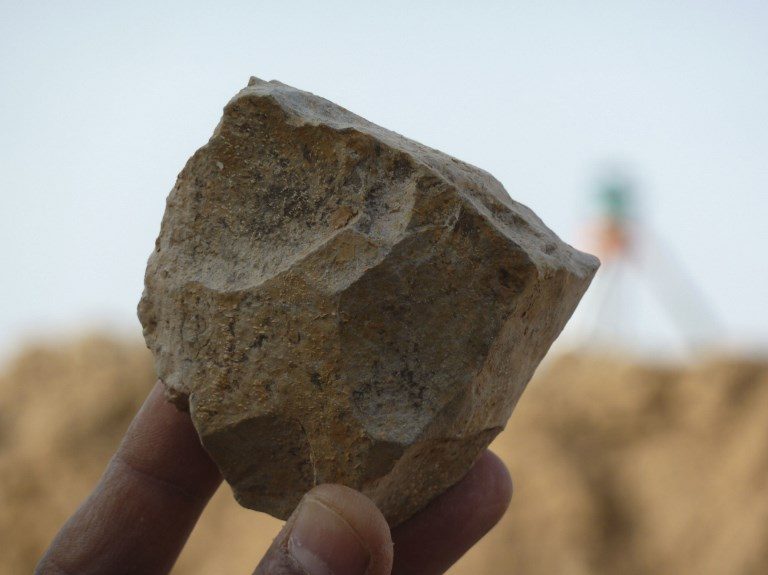SUMMARY
This is AI generated summarization, which may have errors. For context, always refer to the full article.

ALGIERS, Algeria – Archaeologists in Algeria have discovered stone tools and cut animal bones that may be up to 2.4 million years old, bringing into question East Africa’s title as the cradle of humanity, according to research published Thursday, November 29, in the journal Science.
The artifacts – more ancient than those discovered in the region until now – were found in Setif, some 200 miles (300 kilometers) east of Algiers, by a team of international researchers, including Algerians.
The tools closely resemble those called Oldowan, found until now mainly in East Africa.
The tools were unearthed near dozens of fossilized animal bones which contained cut marks, as if relics of prehistoric butchers.
The bones came from animals including the ancestors of crocodiles, elephants and hippopotamuses.
“East Africa is widely considered to be the birthplace of stone tool use by our ancient hominid ancestors – the earliest examples of which date as far back as about 2.6 million years ago,” said the report in Science.
“The new findings make Ain Boucherit the oldest site in northern Africa with in situ evidence of hominin meat use with associated stone tools and they suggest that other similarly early sites could be found outside of the Eastern Africa Rift.”
One hypothesis is that early ancestors of modern day humans quickly carried stone tools with them out of East Africa and into other regions of the continent.
Another is a “multiple origin scenario,” in which early hominids made and used tools in both East and North Africa.
“The site of Ain Lahnech is the second oldest in the world after Gona in Ethiopia, which goes back to 2.6 million years ago and is widely considered the cradle of humanity,” lead author Mohamed Sahouni told Agence France-Presse.
The discoveries were made in two layers – one dating to 2.4 million years ago and the second dating to 1.9 million years old.
More in the Sahara?
The findings suggest that the ancestors of modern people were present in north Africa at least 600,000 years earlier than scientists thought.
Until now, the oldest known tools from northern Africa were 1.8 million years old, and were found at a nearby site.
No humans remains were found. Therefore, scientists don’t know what species of hominids were at the site, or what ancient cousin of homo sapiens (who appeared much later), used these tools.
The dig was undertaken by experts from research institutions in Spain, Algeria, Australia and France.
“Now that Ain Boucherit has yielded Oldowan archeology estimated to 2.4 million years ago, Northern Africa and the Sahara may be a repository of further archaeological materials,” the study said.
“Based on the potential of Ain Boucherit and the adjacent sedimentary basins, we suggest that hominin fossils and Oldowan artifacts as old as those documented in East Africa could be discovered in North Africa as well.” – Rappler.com
Add a comment
How does this make you feel?
There are no comments yet. Add your comment to start the conversation.